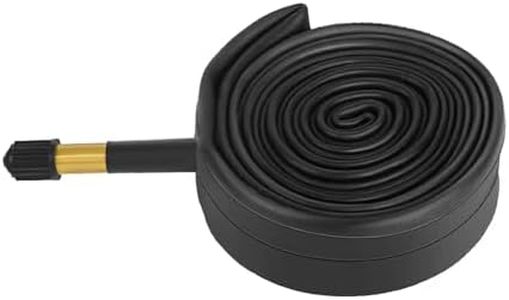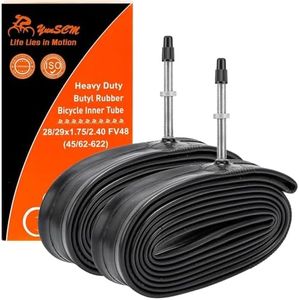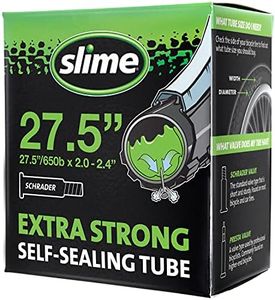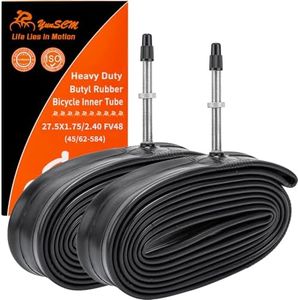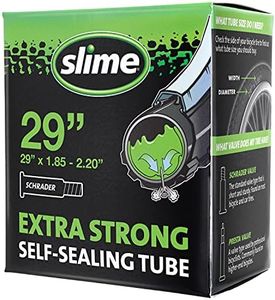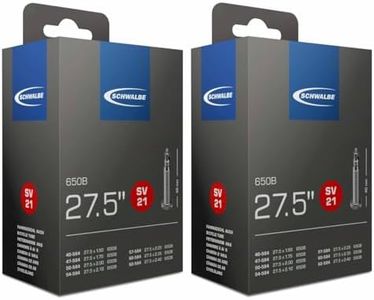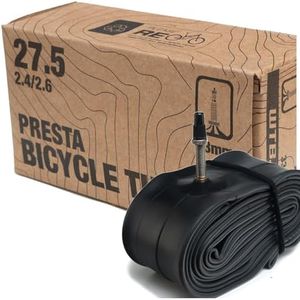We Use CookiesWe use cookies to enhance the security, performance,
functionality and for analytical and promotional activities. By continuing to browse this site you
are agreeing to our privacy policy
10 Best Mountain Bike Tubes
From leading brands and best sellers available on the web.Buying Guide for the Best Mountain Bike Tubes
When you're shopping for mountain bike tubes, it's important to think about your bike, the terrain you'll ride on, and your own preferences. Tubes are a core part of your bike's setup—they sit inside your tire and hold the air that keeps you rolling. The right tube can affect how comfortable your ride is, how much your bike weighs, and how often you have to deal with flats. Choosing the best tube for your needs involves understanding a few key features, and matching them to your riding style and environment.Tube Size (Diameter and Width)Tube size refers to the diameter and width of the tube, which should closely match the size of your mountain bike tires. The diameter is usually 26, 27.5 (650B), or 29 inches, while the width can range from about 1.5 to 2.5 inches or more. It's important because if you get the wrong size, the tube won't fit your tire properly—it might be difficult to install, could get pinched, or lead to more flats. To pick the right size, check the sidewall of your tire for markings like '29 x 2.1', and make sure your tube matches both the diameter and the appropriate width range. Opt for a tube that falls within the width range of your tires for a good fit.
Valve TypeThere are two main types of valves you'll find on mountain bike tubes: Schrader and Presta. Schrader valves look like car tire valves—wide and sturdy—while Presta valves are thinner and longer, often with a screw top. Valve type matters because your wheel rim must be compatible, and your pump needs to fit. For mountain bikes, either can work, but Presta valves are sometimes seen on higher-performance bikes. If you're already using a pump or have rims designed for a certain valve, stick with that type.
Tube Material (Standard vs. Lightweight vs. Heavy-Duty)Mountain bike tubes are typically made from butyl rubber, but they come in different thicknesses and weights. Standard tubes are a good choice for most riders—durable and reasonably light. Lightweight tubes can help reduce your bike’s weight and make pedaling easier, but they're a bit more prone to punctures. Heavy-duty tubes are thicker and resist punctures better, making them suitable for rocky or thorny trails, but they weigh more. Choose lightweight if you prioritize speed and racing, heavy-duty for rough trails and extra protection, or standard for general riding.
Puncture ResistancePuncture resistance refers to how well a tube can withstand sharp objects like thorns or glass without getting a flat. Some tubes come with extra-thick rubber or even built-in sealant. Higher resistance is important if you ride on rough or debris-strewn terrain. If you often get flats, look for tubes with reinforced walls or versions that mention puncture-proof features. For smoother trails or casual use, standard tubes should be fine.
Removable Valve CoreA removable valve core means the small part inside the valve can be unscrewed and taken out. This is useful if you want to add sealant to your tube (to seal small punctures automatically) or if the valve ever gets clogged and needs cleaning. If you plan on using tire sealant or want maximum versatility, choose a tube with a removable valve core; otherwise, it’s not a necessary feature for most riders.
